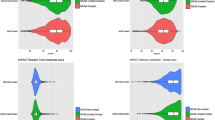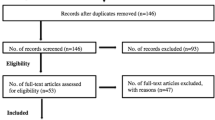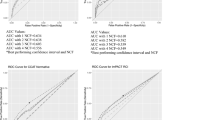Abstract
Background
Concussion pre-injury (i.e., baseline) assessments serve as a benchmark comparison point in the event an individual sustains a concussion and allows clinicians to compare to post-injury measures. However, baseline assessments must reflect the individual’s true and most optimized performance to serve as a useful comparison. Mental fatigue and motivation throughout baseline testing may alter individual assessment performance, indicating an order of administration (OoA) may play an influential role in assessment outcomes.
Objective
To examine the influence concussion baseline battery OoA has on symptom, postural stability, cognitive screening, and computerized neurocognitive test outcomes.
Methods
We employed a retrospective observational cohort study to examine healthy collegiate student-athletes and military cadets (n = 2898, 19.0 ± 1.4 years, 66.1% male, 75.6% white, 54.4% Division-I) baseline assessment performance on the Sport Concussion Assessment Tool (SCAT; total symptom number and severity), Balance Error Scoring System (BESS; total error scores), Standardized Assessment of Concussion (SAC; total score), and Immediate Post-Concussion Assessment and Cognitive Testing (ImPACT) domain scores (verbal and visual memory, visual-motor speed, reaction time). Assessments were binned to beginning, middle, or end tertiles based upon OoA. We used one-way ANOVAs with Tukey post-hoc t tests, 95% confidence intervals (CI), and Cohen’s d effect sizes for significant models (α = 0.05).
Results
SCAT total symptom number (mean difference = 2.23; 95% CI 1.76–2.70; d = 0.49, p < 0.001) and severity (mean difference = 5.58; 95% CI 4.42–6.74; d = 0.50; p < 0.001) were lower when completed at the end of baseline testing compared to the middle. Total BESS errors were 1.06 lower when completed at the middle relative to the end (95% CI 0.43–1.69; d = 0.17; p = 0.001). Total SAC scores were better at the beginning relative to middle (mean difference = 0.58; 95% CI 0.25–0.90; d = 0.33; p < 0.001) and end (mean difference = 0.44; 95% CI 0.16–0.73; d = 0.24; p = 0.001). Verbal memory, visual memory, and reaction time performance were highest at the beginning (p ≤ 0.002), while visual-motor speed performance was highest at the middle (p = 0.001).
Conclusion
Completing baseline assessments in the order of (1) ImPACT, (2) SAC, (3) BESS, and (4) SCAT symptom checklist may improve performance across assessments collectively. Clinicians and researchers should consider completing baseline assessments in this order when possible to potentially aid in optimizing concussion baseline assessment performance and maximize post-concussion comparisons.



Similar content being viewed by others
References
Guskiewicz KM, Weaver NL, Padua DA, Garrett WE. Epidemiology of concussion in collegiate and high school football players. Am J Sports Med. 2000;28:643–50.
Halstead ME, Walter KD. The Council on sports medicine and fitness sport-related concussion in children and adolescents. Pediatrics. 2010;126:597–615.
McCrory P, Meeuwisse W, Dvorak J, Aubry M, Bailes J, Broglio S, et al. Consensus statement on concussion in sport—the 5th international conference on concussion in sport held in Berlin, October 2016. Br J Sports Med. 2017;bjsports-2017-097699.
Broglio SP, Puetz TW. The effect of sport concussion on neurocognitive function, self-report symptoms and postural control. Sports Med. 2008;38:53–67.
Broglio SP, Macciocchi SN, Ferrara MS. Sensitivity of the concussion assessment battery. Neurosurgery. 2007;60:1050–7 (discussion 1057–1058).
Resch JE, Brown CN, Schmidt J, Macciocchi SN, Blueitt D, Cullum CM, et al. The sensitivity and specificity of clinical measures of sport concussion: three tests are better than one. BMJ Open Sport Exerc Med. 2016;2:e000012.
Broglio SP, Harezlak J, Katz B, Zhao S, McAllister T, McCrea M, et al. Acute sport concussion assessment optimization: a prospective assessment from the CARE consortium. Sports Med [Internet]. 2019 [cited 2019 Jul 28]. https://doi.org/10.1007/s40279-019-01155-0.
Lempke LB, Schmidt JD, Lynall RC. Athletic trainers’ concussion-assessment and -management practices: an update. J Athl Train. 2020;51:17–26.
Broglio SP, McCrea M, McAllister T, Harezlak J, Katz B, Hack D, et al. A National Study on the Effects of Concussion in Collegiate Athletes and US Military Service Academy Members: the NCAA–DoD Concussion Assessment, Research and Education (CARE) Consortium Structure and Methods. Sports Med [Internet]. 2017 [cited 2017 Mar 24]. https://doi.org/10.1007/s40279-017-0707-1.
Louey AG, Cromer JA, Schembri AJ, Darby DG, Maruff P, Makdissi M, et al. Detecting cognitive impairment after concussion: sensitivity of change from baseline and normative data methods using the CogSport/Axon cognitive test battery. Arch Clin Neuropsychol. 2014;29:432–41.
Covassin T, Elbin R, Kontos A, Larson E. Investigating baseline neurocognitive performance between male and female athletes with a history of multiple concussion. J Neurol Neurosurg Psychiatry. 2010;81:597–601.
Moser RS, Schatz P, Neidzwski K, Ott SD. Group versus individual administration affects baseline neurocognitive test performance. Am J Sports Med. 2011;39:2325–30.
Anderson MN, Lempke LB, Bell DH, Lynall RC, Schmidt JD. The ability of CNS vital signs to detect coached sandbagging performance during concussion baseline testing: a randomized control trial. Brain Inj. 2020;34:369–74.
Walton SR, Broshek DK, Freeman JR, Hertel J, Meyer JP, Erdman NK, et al. Institutionally based ImPACT Test® normative values may differ from manufacturer-provided normative values. Arch Clin Neuropsychol. 2020;35:275–82.
Kuhn AW, Solomon GS. Supervision and computerized neurocognitive baseline test performance in high school athletes: an initial investigation. J Athl Train. 2014;49:800–5.
Sufrinko A, Pearce K, Elbin RJ, Covassin T, Johnson E, Collins M, et al. The effect of preinjury sleep difficulties on neurocognitive impairment and symptoms after sport-related concussion. Am J Sports Med. 2015;43:830–8.
Bailey CM, Echemendia RJ, Arnett PA. The impact of motivation on neuropsychological performance in sports-related mild traumatic brain injury. J Int Neuropsychol Soc [Internet]. 2006 [cited 2019 Feb 4];12. http://www.journals.cambridge.org/abstract_S1355617706060619.
Covassin T, Weiss L, Powell J, Womack C. Effects of a maximal exercise test on neurocognitive function. Yearb Sports Med. 2008;2008:10–1.
Boksem MAS, Tops M. Mental fatigue: costs and benefits. Brain Res Rev. 2008;59:125–39.
Register-Mihalik JK, Kontos DL, Guskiewicz KM, Mihalik JP, Conder R, Shields EW. Age-related differences and reliability on computerized and paper-and-pencil neurocognitive assessment batteries. J Athl Train. 2012;47:297–305.
Lloyd KP, Higginson CI, Lating JM, Coiro MJ. Test-order effects: a measure of verbal memory influences performance on a measure of verbal fluency. Appl Neuropsychol Adult. 2012;19:299–304.
Brandon AD, Chavez EL. Order and delay effects on neuropsychological test presentation: the Halstead Category and Wisconsin Card Sorting Tests. Int J Clin Neuropsychol. 1985;7:152–3.
Franzen MD, Smith SS, Paul DS, Maclnnes WD. Order effects in the administration of the booklet category test and Wisconsin Card Sorting Test. Arch Clin Neuropsychol. 1993;8:105–10.
Ackerman PL, Kanfer R. Test length and cognitive fatigue: an empirical examination of effects on performance and test-taker reactions. J Exp Psychol Appl. 2009;15:163–81.
Boksem MAS, Meijman TF, Lorist MM. Effects of mental fatigue on attention: an ERP study. Cogn Brain Res. 2005;25:107–16.
von Elm E, Altman DG, Egger M, Pocock SJ, Gøtzsche PC, Vandenbroucke JP. The Strengthening the Reporting of Observational Studies in Epidemiology (STROBE) statement: guidelines for reporting observational studies. J Clin Epidemiol. 2008;61:344–9.
Broglio SP, Katz BP, Zhao S, McCrea M, McAllister T, CARE Consortium Investigators. Test-retest reliability and interpretation of common concussion assessment tools: findings from the NCAA-DoD CARE consortium. Sports Med Auckl NZ. 2017;48:1255–68.
Medicine BPGL and BA of S and E. Sport Concussion Assessment Tool—3rd Edition. Br J Sports Med. 2013;47:259.
Guskiewicz KM, Register-Mihalik J, McCrory P, McCrea M, Johnston K, Makdissi M, et al. Evidence-based approach to revising the SCAT2: introducing the SCAT3. Br J Sports Med. 2013;47:289–93.
Guskiewicz KM, Ross SE, Marshall SW. Postural stability and neuropsychological deficits after concussion in collegiate athletes. J Athl Train. 2001;36:263–73.
McCrea M, Kelly JP, Kluge J, Ackley B, Randolph C. Standardized Assessment of Concussion in football players. Neurology. 1997;48:586–8.
McCrea M, Kelly JP, Randolph C, Kluge J, Bartolic E, Finn G, et al. Standardized Assessment of Concussion (SAC): On-Site Mental Status Evaluation of the Athlete: J Head Trauma Rehabil. 1998;13:27–35.
Resch JE, Schneider MW, Munro CC. The test-retest reliability of three computerized neurocognitive tests used in the assessment of sport concussion. Int J Psychophysiol. 2018;132:31–8.
Schatz P, Pardini J, Lovell M, Collins M, Podell K. Sensitivity and specificity of the ImPACT Test Battery for concussion in athletes. Arch Clin Neuropsychol. 2006;21:91–9.
Mucha A, Collins MW, Elbin RJ, Furman JM, Troutman-Enseki C, DeWolf RM, et al. A brief vestibular/ocular motor screening (VOMS) assessment to evaluate concussions: preliminary findings. Am J Sports Med. 2014;42:2479–86.
Sufrinko AM, Mucha A, Covassin T, Marchetti G, Elbin RJ, Collins MW, et al. Sex differences in vestibular/ocular and neurocognitive outcomes after sport-related concussion. Clin J Sport Med. 2017;27:133–8.
Caccese JB, Eckner JT, Franco-MacKendrick L, Hazzard JB, Ni M, Broglio SP, et al. Clinical reaction-time performance factors in healthy collegiate athletes. J Athl Train. 2020;55:601–7.
Lempke LB, Howell DR, Eckner JT, Lynall RC. Examination of reaction time deficits following concussion: a systematic review and meta-analysis. Sports Med. 2020;50:1341–59.
Galetta KM, Brandes LE, Maki K, Dziemianowicz MS, Laudano E, Allen M, et al. The King-Devick test and sports-related concussion: study of a rapid visual screening tool in a collegiate cohort. J Neurol Sci. 2011;309:34–9.
Tjarks BJ, Dorman JC, Valentine VD, Munce TA, Thompson PA, Kindt SL, et al. Comparison and utility of King-Devick and ImPACT(R) composite scores in adolescent concussion patients. J Neurol Sci. 2013;334:148–53.
Cohen J. Statistical power analysis for the behavioral sciences. 2nd ed. Hillsdale: Erlbaum Associates; 1988.
RStudio Team. RStudio: integrated development environment for R [Internet]. Boston, MA: RStudio, Inc.; 2016. Available from: http://www.rstudio.com/.
Bell DR, Guskiewicz KM, Clark MA, Padua DA. Systematic review of the balance error scoring system. Sports Health. 2011;3:287–95.
Jacobson NS, Truax P. Clinical significance: a statistical approach to defining meaningful change in psychotherapy research. J Consult Clin Psychol. 1991;59:12–9.
Van der Vaart AW. Asymptotic statistics. Cambridge: Cambridge University Press; 2000.
Balasundaram AP, Athens J, Schneiders AG, McCrory P, Sullivan SJ. Day-to-day variability of post-concussion-like symptoms reported over time by a non-concussed cohort. Brain Inj. 2016;30:1599–604.
Marcora SM, Staiano W, Manning V. Mental fatigue impairs physical performance in humans. J Appl Physiol. 2009;106:857–64.
Ozinga SJ, Linder SM, Koop MM, Dey T, Figler R, Russman AN, et al. Normative performance on the balance error scoring system by youth, high school, and collegiate athletes. J Athl Train. 2018;53:636–45.
Wilkins JC, Valovich McLeod TC, Perrin DH, Gansneder BM. Performance on the balance error scoring system decreases after fatigue. J Athl Train. 2004;39:156–61.
Chin EY, Nelson LD, Barr WB, McCrory P, McCrea MA. Reliability and validity of the sport concussion assessment tool-3 (SCAT3) in high school and collegiate athletes. Am J Sports Med. 2016;44:2276–85.
Echemendia RJ, Meeuwisse W, McCrory P, Davis GA, Putukian M, Leddy J, et al. The Sport Concussion Assessment Tool 5th edition (SCAT5): background and rationale. Br J Sports Med. 2017;51:848–50.
Acknowledgements
We would like to thank Jody Harland, Janetta Matesan, Larry Riggen (Indiana University); Ashley Rettmann (University of Michigan); Melissa Koschnitzke (Medical College of Wisconsin); Michael Jarrett, Vibeke Brinck and Bianca Byrne (Quesgen); and the research and medical staff at each of the participating sites.
Contributing CARE Consortium Investigators include: Thomas Buckley, EdD, ATC and Thomas W. Kaminski, PhD, ATC (University of Delaware); James T. Eckner MD, MS (University of Michigan); Micky Collins and Anthony P. Kontos, PhD (University of Pittsburgh); Stefan Duma, PhD (Virginia Tech); Louise A. Kelly, PhD (California Lutheran University); Alison Brooks, MD, MPH (University of Wisconsin-Madison); April Hoy, MS, ATC (Azusa Pacific University); Luis A. Feigenbaum, PT, DPT, ATC (University of Miami); Christina L. Master, MD, FAAP, CAQSM, FACSM (Children’s Hospital of Philadelphia); Laura Lintner, DO (Wake Forest University); Jason P. Mihalik, PhD, CAT(C), ATC (University of North Carolina at Chapel Hill); Justus Ortega, PhD (Humboldt State University); Nicholas Port, PhD (Indiana University); and Adam J. Susmarski, DO (United States Naval Academy). CARE Consortium Investigators are listed alphabetically by institution: April M. (Reed) Hoy, MS, ATC (Azusa Pacific University); Joseph B. Hazzard Jr., EdD, ATC (Bloomsburg University); Louise A. Kelly, PhD (California Lutheran University); Justus D. Ortega, PhD (Humboldt State University); Nicholas Port, PhD (Indiana University); Margot Putukian MD (Princeton University); T. Dianne Langford, PhD, and Ryan Tierney, PhD, ATC (Temple University); Christopher C. Giza, MD and Joshua T. Goldman, MD, MBA (University of California, Los Angeles); Holly J. Benjamin MD (University of Chicago); Thomas Buckley, EdD, ATC, and Thomas W. Kaminski, PhD, ATC (University of Delaware); James R. Clugston, MD, MS (University of Florida); Julianne D. Schmidt, PhD, ATC (University of Georgia); Luis A. Feigenbaum, DPT, ATC (University of Miami); Steven P. Broglio, PhD, ATC and James T. Eckner, MD, MS (University of Michigan); Kevin Guskiewicz, PhD, ATC, and Jason P. Mihalik, PhD, CAT(C), ATC (University of North Carolina at Chapel Hill); Jessica Dysart Miles, PhD, ATC (University of North Georgia); Scott Anderson, ATC (University of Oklahoma); Christina L. Master, MD (University of Pennsylvania); Micky Collins, PhD, and Anthony P. Kontos, PhD (University of Pittsburgh Medical Center); Jeffrey J. Bazarian, MD, MPH (University of Rochester); Sara P. O. Chrisman, MD, MPH (University of Washington); Alison Brooks, MD, MPH (University of Wisconsin-Madison); Jonathan Jackson, MD, and Gerald McGinty, DPT (United States Air Force Academy); Patrick O’Donnell, MHA (United States Coast Guard Academy); Kenneth Cameron, PhD, MPH, ATC; Megan N. Houston, PhD, ATC (United States Military Academy); Adam Susmarski, MD (United States Naval Academy); Stefan Duma, PhD and Steve Rowson, PhD (Virginia Tech); Christopher Todd Bullers, MD, and Christopher M. Miles, MD (Wake Forest University); Brian H. Dykhuizen, MS, ATC (Wilmington College); Laura Lintner DO (Winston-Salem University).
Author information
Authors and Affiliations
Consortia
Corresponding author
Ethics declarations
Author Contributions
All authors contributed to the study conception, study design, critical review and interpretation of findings, and drafting and/or critique of the manuscript. All authors read and approved the final manuscript. Specifically, Landon B. Lempke contributed to conceptualization, methodology, data analysis, and original and revised manuscript drafts. Robert C. Lynall and Melissa N. Anderson contributed to conceptualization, analysis interpretation, and original and revised manuscript drafting. Michael A. McCrea, Thomas W. McAllister, and Steven P. Broglio contributed to conceptualization, methodology, data analysis and manuscript critique, and funding acquisition. Julianne D. Schmidt contributed to conceptualization, analysis interpretation, original and revised manuscript drafting, and funding acquisition. The CARE Consortium Investigators contributed to critical critique and review of methodology, data analysis, and original manuscript review.
Funding
This study was made possible, in part, with support from the Grand Alliance Concussion Assessment, Research, and Education Consortium, funded by the National Collegiate Athletic Association and the Department of Defense. The US Army Medical Research Acquisition Activity, 820 Chandler Street, Fort Detrick, MD 21702-5014, USA is the awarding and administering acquisition office. This work was supported by the Office of the Assistant Secretary of Defense for Health Affairs through the Psychological Health and Traumatic Brain Injury Program under Award no. W81XWH-14-2-0151. Opinions, interpretations, conclusions, and recommendations are those of the authors and are not necessarily endorsed by the Department of Defense (Defense Health Program funds).
Conflict of interest
Landon B. Lempke, Robert C. Lynall, Melissa N. Anderson, Michael A. McCrea, Thomas W. McAllister and Julianne D. Schmidt declare that they have no additional conflicts of interest relevant to the content of this manuscript.
Availability of data and material
The CARE Consortium datasets generated and analyzed during the current study are available in the FITBIR repository (https://ftbir.nih.gov/).
Research involving human participants
The study was performed in accordance with the standards of ethics outlined in the Declaration of Helsinki.
Informed consent
All study procedures were reviewed and approved by the University of Michigan IRB, the US Army Medical Research and Materiel Command Human Research Protection Office (HRPO), as well the local IRB at each of the performance sites. Participants provided written informed consent prior to participation.
Code availability
Not applicable.
Additional information
This article is part of a Topical Collection on The NCAA-DoD Concussion Assessment, Research and Education (CARE) Consortium.
Members of the ‘CARE Consortium Investigators’ are given in the Acknowledgements section.
Rights and permissions
About this article
Cite this article
Lempke, L.B., Lynall, R.C., Anderson, M.N. et al. Optimizing Order of Administration for Concussion Baseline Assessment Among NCAA Student-Athletes and Military Cadets. Sports Med 52, 165–176 (2022). https://doi.org/10.1007/s40279-021-01493-y
Accepted:
Published:
Issue Date:
DOI: https://doi.org/10.1007/s40279-021-01493-y




